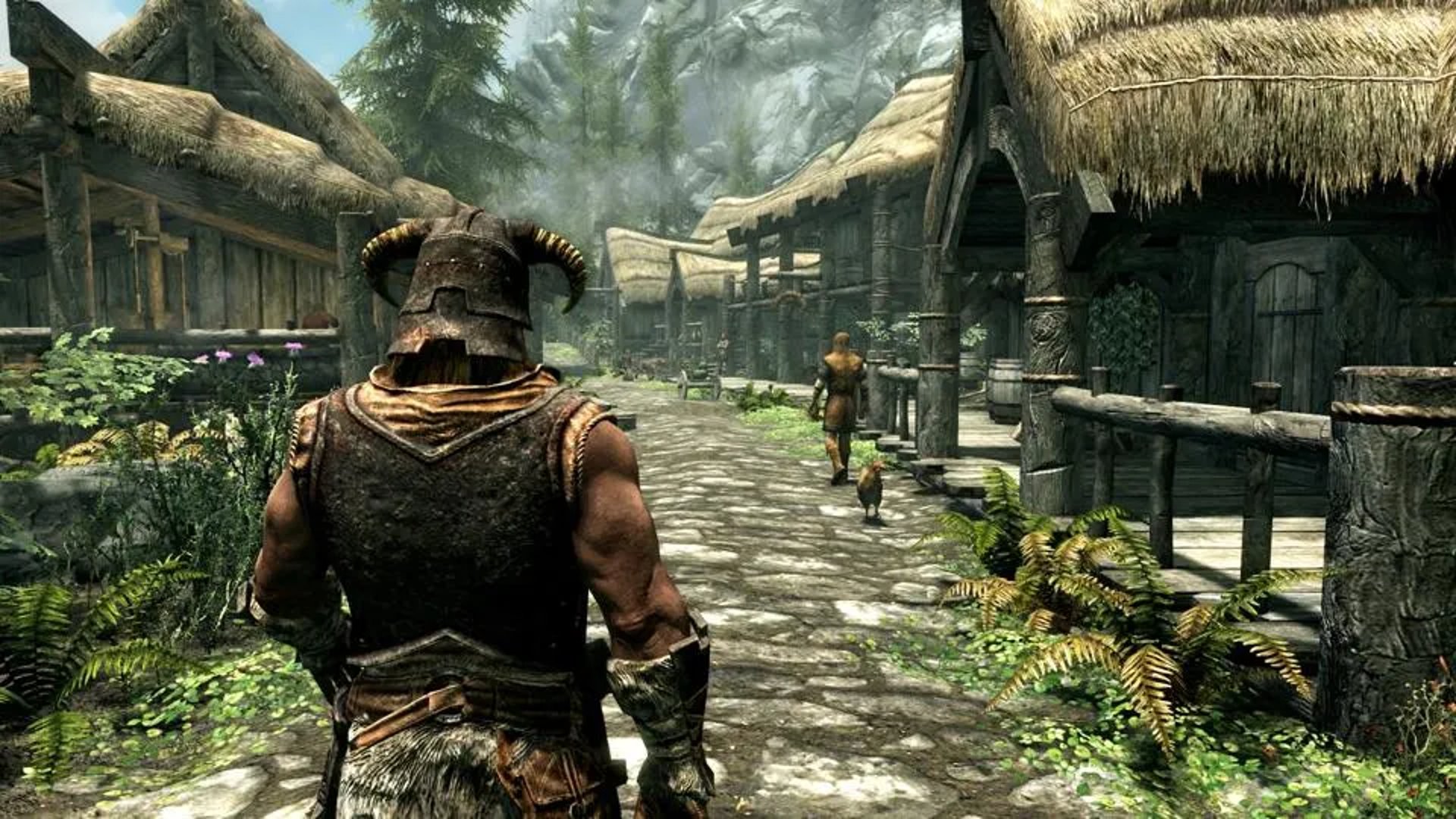
The Future of Open-World Design in 2025: Innovations and Expectations
Open-world games have become a cornerstone of modern gaming, allowing players to explore vast, dynamic environments at their own pace. But with technological advancements, the open-world experience is set to evolve significantly in 2025. From procedural generation to enhanced interactivity and AI-driven worlds, the future of open-world design promises to redefine how we explore and interact with virtual spaces. This article explores the innovations and expectations for open-world games in 2025 and beyond.
GAME INDUSTRYOPEN WORLDGAMING TECH
Tama
1/21/2025
The Evolution of Open-World Games in 2025: What to Expect from the Next Generation of Immersive Worlds
The open-world genre has transformed gaming, giving players unprecedented freedom to roam vast, interconnected worlds. With games like The Witcher 3: Wild Hunt, Red Dead Redemption 2, and Breath of the Wild, developers have created worlds that feel alive, dynamic, and immersive. However, as we approach 2025, open-world games are poised to evolve once again, driven by advancements in AI, procedural generation, and game design.
As technology continues to improve, open-world games will likely become more interactive, realistic, and expansive, offering new forms of storytelling, exploration, and player agency. In this article, we’ll look at the innovations that will shape the future of open-world games in 2025, focusing on the major trends and expectations that will define the genre.
Procedural Generation: Creating Endless, Unique Worlds
Procedural generation is a key innovation that allows developers to create vast, expansive game worlds without having to manually design every area. In the past, this technology has been used in titles like No Man’s Sky, where entire planets are generated algorithmically, offering players a nearly infinite universe to explore.
In 2025, we can expect procedural generation to reach new heights, enabling developers to create even larger, more diverse, and more realistic open-world environments. This could result in worlds that are not only massive but also uniquely tailored to the player’s choices and actions.
Diverse Biomes and Ecosystems: Advanced procedural generation will allow for highly detailed and varied ecosystems within a single open world. Players could encounter different biomes—such as deserts, jungles, cities, and underwater realms—that transition seamlessly as they explore. These areas will feel interconnected, with ecosystems evolving based on player interaction and environmental changes.
Dynamic World Evolution: AI-driven procedural generation will likely also lead to worlds that evolve based on player decisions. If a player’s actions lead to the downfall of a city or the extinction of a species, the world will adapt in real time. This dynamic evolution will make the world feel reactive and living, providing a truly unique experience for each player.
Endless Exploration: Games like No Man’s Sky already offer near-infinite exploration, but advancements in procedural generation will make these worlds more varied and rich in content. In 2025, open-world games will likely feature procedurally generated regions that are not only vast but also filled with rich, meaningful content that players can engage with, ensuring that exploration is never repetitive or dull.
Enhanced AI: Making the World Feel Alive
In open-world games, AI plays a crucial role in populating the world with characters, creatures, and systems that react dynamically to the player. As AI technology advances, we can expect to see significantly more intelligent NPCs, animals, and even ecosystems, making the world feel more interactive and immersive.
AI-Driven NPCs: NPCs will become more lifelike and reactive to the player’s presence and actions. Rather than simply following set routines, these characters will have their own goals, motivations, and emotions, making them feel like actual inhabitants of the world. For example, an NPC might react differently to the player depending on their past interactions, current reputation, or the player’s actions in the world.
Reactive Wildlife and Ecosystems: Wildlife and ecosystems will also be driven by advanced AI. In 2025, animals will react to the environment and the player’s behavior more realistically. If players hunt too many predators, prey species might proliferate, or if they destroy a forest, the animal populations might shift to new areas. This level of interactivity will make the world feel alive and constantly changing.
Dynamic Factions and Economies: The game’s various factions, cities, or settlements will be influenced by AI systems that monitor the state of the world. Economies might rise or fall based on the player’s actions, political tensions may escalate, and rival factions could vie for control. As players interact with these systems, they’ll witness a truly dynamic, ever-evolving world that adapts to their choices.
Next-Gen Graphics: Visualizing Massive, Living Worlds
The visual fidelity of open-world games has always been a major selling point, and with the hardware advancements of 2025, we can expect even more breathtaking and immersive environments. Next-gen graphics will take open-world games to a new level, making the virtual worlds not only bigger but more detailed, vibrant, and lifelike than ever before.
Photorealistic Environments: With the power of next-gen consoles and high-end PCs, open-world games will push the boundaries of visual realism. Players can expect photorealistic lighting, weather systems, and environments that look indistinguishable from the real world. Cities, forests, mountains, and oceans will be meticulously rendered, offering players breathtaking views and truly immersive exploration.
Advanced Animation and Motion Capture: Characters and creatures in open-world games will be more lifelike, with smoother animations, better motion capture, and more detailed facial expressions. NPCs will no longer just stand still or walk along preset paths; they’ll move naturally within their environments, engaging in activities like working, talking, or reacting to events in the world around them.
Seamless Transitions: With the power of SSDs and advanced graphics, we’ll see faster loading times and more seamless transitions between environments. Players won’t have to wait for loading screens when transitioning from open fields to cities or between different areas of a massive game world. This will make exploration feel uninterrupted and fluid, enhancing immersion.
Player Agency and Interactivity: Worlds That React to You
In open-world games, player agency—the ability to affect the world and the story—has always been a key factor. As open-world games continue to evolve, we can expect an increased focus on player choices and actions, with entire storylines and world events shaped by the way players engage with the environment.
Impactful Choices: 2025 RPGs and open-world games will place a heavier emphasis on player decisions. The world will adapt in real-time based on the player’s actions, with meaningful consequences that shape the outcome of quests, storylines, and even the state of the world. Helping or hindering factions, making moral decisions, or choosing sides in a conflict will all have long-term effects.
Dynamic Storytelling: Traditional open-world games often featured main storylines with set endings, but by 2025, we can expect to see more flexible, player-driven narratives. AI-driven storytelling systems will generate unique experiences for every player, allowing the story to adapt to individual playstyles. Players might find themselves in unexpected situations, with storylines that diverge or merge based on their choices.
Customizable Worlds: Players will have more control over the world around them, with systems that allow for the customization of cities, settlements, and even environments. This could include building and managing structures, influencing ecosystems, or shaping the socio-political landscape of the game world.
Multiplayer and Shared Worlds: Open-Worlds as Social Spaces
The future of open-world games will not only be about single-player experiences but also about social interaction and multiplayer integration. As online multiplayer experiences become more sophisticated, the lines between single-player and multiplayer games will blur, creating shared open worlds that can be explored together or individually.
Shared Worlds: In 2025, open-world games will offer persistent online worlds where players can engage in cooperative play, PvP combat, and social activities. These worlds will be dynamic, with events and changes that are influenced by the collective actions of the player base. Whether it’s a massive battle for territory or a cooperative effort to build a city, multiplayer will be seamlessly integrated into the open-world experience.
Player-driven Events: Multiplayer open worlds will allow players to create and participate in large-scale events that shape the world. Whether it’s a massive raid, a political revolution, or a cultural festival, players will have the opportunity to influence the direction of the world in meaningful ways.
Cross-Platform Play: With the rise of cross-platform technology, players on different consoles and PCs will be able to interact within the same shared open-world environments. This will foster larger, more diverse player communities and allow for richer social interactions.
Conclusion
As we approach 2025, the future of open-world game design is incredibly exciting. With innovations in procedural generation, AI, next-gen graphics, and player agency, the next wave of open-world games will offer richer, more dynamic experiences than ever before. The worlds will be bigger, more interactive, and more responsive, allowing players to engage with them in ways that were once unimaginable.
From more lifelike NPCs and ecosystems to seamless, player-driven narratives, the open-world genre will continue to evolve and redefine what it means to explore and interact with a virtual world. As technology advances, these games will become more immersive, realistic, and personalized, offering experiences that feel uniquely tailored to each player.
For gamers, the future of open-world design promises endless exploration, deeper immersion, and more meaningful interactions. Whether you’re uncovering hidden secrets, shaping the destiny of a city, or simply enjoying the beauty of a virtual landscape, 2025’s open-world games will deliver experiences that push the boundaries of what gaming can achieve.
PlayEcho delivers the latest news, reviews, and insights from the gaming world, highlighting local talents and global trends for gamers everywhere.
FAQs
Will procedural generation create unique worlds in every open-world game?
Yes. Procedural generation allows for vast and diverse game worlds that change each time a new game is started, offering players an endless variety of environments and experiences.How will AI enhance NPCs in open-world games?
AI will make NPCs more reactive, emotional, and intelligent, allowing them to respond dynamically to the player’s actions, motivations, and behaviors, creating a more lifelike and immersive world.Will open-world games in 2025 have seamless transitions between areas?
Yes. Thanks to faster loading times and advanced technology, 2025 open-world games will feature seamless transitions between different environments, eliminating loading screens and improving immersion.How will multiplayer influence open-world games?
Multiplayer integration will allow players to interact in shared, persistent worlds, creating opportunities for cooperative and competitive gameplay, large-scale events, and player-driven narratives.What new innovations can we expect in open-world games in 2025?
We can expect innovations like AI-driven ecosystems, procedurally generated worlds with unique content, highly interactive NPCs, customizable environments, and deep player agency, making open worlds more dynamic and immersive than ever.
Terms and Conditions
Privacy Policy
PlayEcho
Newest information about game industry and analysis.
Subscribe to our newsletter
© 2025. All rights reserved.








